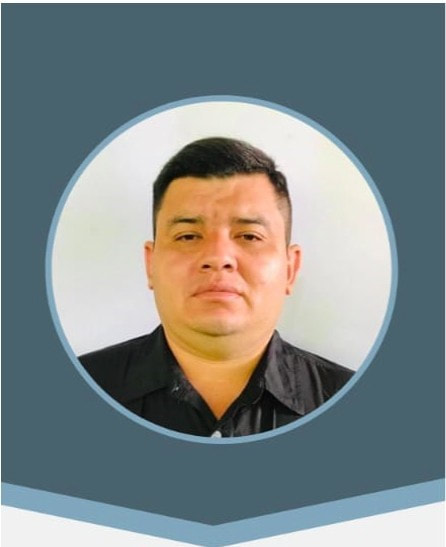|
Dear PPR GEP Supporters and Members of the PPR GREN
I am pleased to inform you that the next talk in our PPR Stakeholder Series will be given by GALVmed on January 13th, 2023, 11:00-12:00 CET. A registration link will be sent closer to the time, but we hope you can block this date in your calendars in order to join us then. Title: New Vaccine and Market Development for Small Ruminant Vaccines at GALVmed Authors: Steve Wilson, Gwynneth Clay, Enrique Hernandez-Pando, Carolin Schumacher Summary: Sheep and goat populations around the world have been steadily growing and represent an increasingly important agricultural asset, particularly for the rural population in low- and middle-income countries. Despite this trend, animal health products, especially vaccines for small ruminants, are largely missing from animal health product portfolios available to small-scale livestock producers in Africa and South Asia. GALVmed has been working with commercial partners to fill these gaps and to provide to the market new mono- and multivalent vaccines addressing Brucella melitensis, CCPP, SGP and PPR. We will provide an update on ongoing vaccine development work and elaborate on the barriers to market that companies encounter when attempting to provide comprehensive solutions to assist small-scale livestock producers in managing small ruminant health in LMICs. Best regards Camilla, on behalf of the PPR Secretariat
0 Comments
El 26 de septiembre del presente año, se llevó a cabo la charla "¿Cómo prevenir la Paratuberculosis en el rebaño caprino y por qué? dictada por el Académico de la Universidad Austral Dr. Miguel Salgado, dentro del marco de actividades de difusión del Programa Transforma Caprino de Corfo, en conjunto con el Instituto de Investigaciones Agropecuarias INIA y la Universidad de Chile, que se ejecuta en la Región de Coquimbo, Chile a la cual pertenece nuestra representante país Chile Claudia Torres.
Es importante mencionar, que la región de Coquimbo, Chile, cuenta con el 60% del ganado caprino a nivel nacional, asociado a cerca de 6 mil pequeños productores, bajo un sistema extensivo y/o semi intensivo, pero que, en los últimos años, impulsado por las continuas sequías y por algunas políticas del estado, ha introducido cabras lecheras de alta producción, provenientes de planteles de otras regiones del país, bajo sistemas intensivos, con el fin de cambiar el sistema productivo actual hacia un sistema totalmente estabulado. Sin embargo, producto de este cambio, se han detectado enfermedades que no eran frecuentes en esta zona, siendo una de ellas la Paratuberculosis, la cual ya ha provocado muerte de animales y preocupación entre los productores que pueden ver afectados, por una parte, su producción, pero también, la venta de vientres o reproductores seleccionados. Es por esta razón que se hizo esta charla, para que los productores entendieran los aspectos más generales de la enfermedad, su importancia y cómo prevenirla, revelando la importancia de conocer el estatus sanitario de los planteles caprinos, así como la trazabilidad de los animales, aspecto que en este momento no se está controlando en el país. Claudia Torres, CR IGA Chile La charla se encuentra en el canal de youtube de la IGA Latinoamérica Análisis de la sostenibilidad en la producción de los pequeños rumiantes usando Desing Thinking11/16/2022 Cardozo Sánchez, José (1) Cardozo Herrán, Mónica (2) Rúa Bustamante, Clara V (3)
PROYECTO/INICIATIVA: El Workshop se desarrolló en Valledupar-Colombia en el marco del II del Encuentro de los representantes Latinoamericanos de la International Goat Association (IGA), llevado a cabo en el XII Congreso de la Asociación Latinoamericana de Especialistas en Pequeños Rumiantes y Camélidos Sudamericanos (ALEPRyCS) durante el 15 al 21 de mayo de 2022 en Valledupar, Cesar – Colombia. escrito por Diana Camila Mogollón y Román Castañeda
La seguridad alimentaria es una de las prioridades del gobierno nacional y se han establecido políticas que la respaldan, e.g. CONPES social 113 de 2008 y el Plan Nacional de Seguridad Alimentaria y Nutricional (PNSAN) 2012 – 2019, siendo las producciones pecuarias un eslabón importante de la cadena de soluciones para garantizarla. La producción de ganado ovino-caprino es una de las actividades más tradicionales en el mundo, demostrado ser una alternativa a las producciones convencionales, dada la adaptabilidad que poseen estas especies a las condiciones de áreas secas y montañosas, así como a diversos escenarios geográficos de nuestro territorio nacional. Los sistemas de producción ovino-caprinos son en general doble propósito aportando tanto carne como leche y sus derivados, además de la lana, la cual es un producto muy valioso en la economía familiar.
Sheep milk: A pertinent functional food
Arpita Mohapatra, Ajay Kumar Shinde, Raghvendar Singh Abstract Modern human diet and changes in lifestyle are emerging as a challenge in developing countries resulting to endless ailments. Thus, in modern spectra of human health, bioactive foods play a pivotal role. Under the umbrella of food and nutrition security, functional dairy foods have become the need of the hour. Sheep milk is one of the functionally active dairy foods and it is also considered as nutritional powerhouse. The beneficial role of sheep milk results from its fatty acid, immunoglobulin and non-immune protein contents. In human gut, milk proteins turn into excellent source of bioactive peptides with antioxidative, antimicrobial, antihypertensive, immunomodulatory and antithrombotic role. It is also used in anti-ageing formulations and cosmetic soap preparations to soothe psoriasis and skin eczema like chronic conditions. The unique physicochemical and biochemical properties of sheep milk also include prebiotics and probiotics which make it perfect functional food for human health promotion and disease risk reduction. The milk from Indian sheep is relished by the shepherds and their households. They claim that it has many health benefits, but it is an untapped area by the Indian researchers. The major challenge in Indian prospect is non availability of dairy sheep breed, but their milk functional potential cannot be ignored. This review is focused on worldwide work done on sheep milk for its unique functional characteristics. Keywords Sheep milk; Milk composition; Functional food; Bioactive peptides READ MORE We want to let you know that a project to update the History of the IGA has begun.
We hope this record will provide IGA members with a better understanding of how the IGA came about and who and what we are. In addition to firsthand knowledge, this document is based on articles by George Haenlein and Warren Foote. The International Goat Association has grown and achieved much in 40 years and has always stayed true to its founding principles. IGA promotes goat research and development for the benefit of humankind, to alleviate poverty, to promote prosperity and to improve the quality of life. We have worked with researchers and development organizations to determine the production potential of goats and how they can be optimized through best management practices, and we share this information with all who are interested.  The IGA is celebrating 40 years of promoting goat research and development for the benefit of humankind, alleviating poverty, promoting prosperity and improving the quality of life. We seek to grow our global network of people and organizations so we can generate more sharing of information, experiences and best practices. To honor this milestone, we have temporarily reduced the cost of all IGA memberships by $15. An IGA Membership is now only $40, including online access to Small Ruminant Research, and an IGA Membership Plus is only $140, including hardcopy and online access to SRR. Please note that all IGA memberships are for one year from the time that you join or renew. Use the coupon code IGA40 at checkout. This special price will last from now until December 31, 2022. Thank you to all who have been part of the IGA for the past 40 years! |
IGA Blog
The International Goat Association promotes goat research and development for the benefit of humankind, to alleviate poverty, to promote prosperity and to improve the quality of life. Archives
May 2024
Categories
All
|
|
International Goat Association
2516 Millbrook Rd., Little Rock, AR72227 USA email: [email protected] -454-1641 |


 RSS Feed
RSS Feed